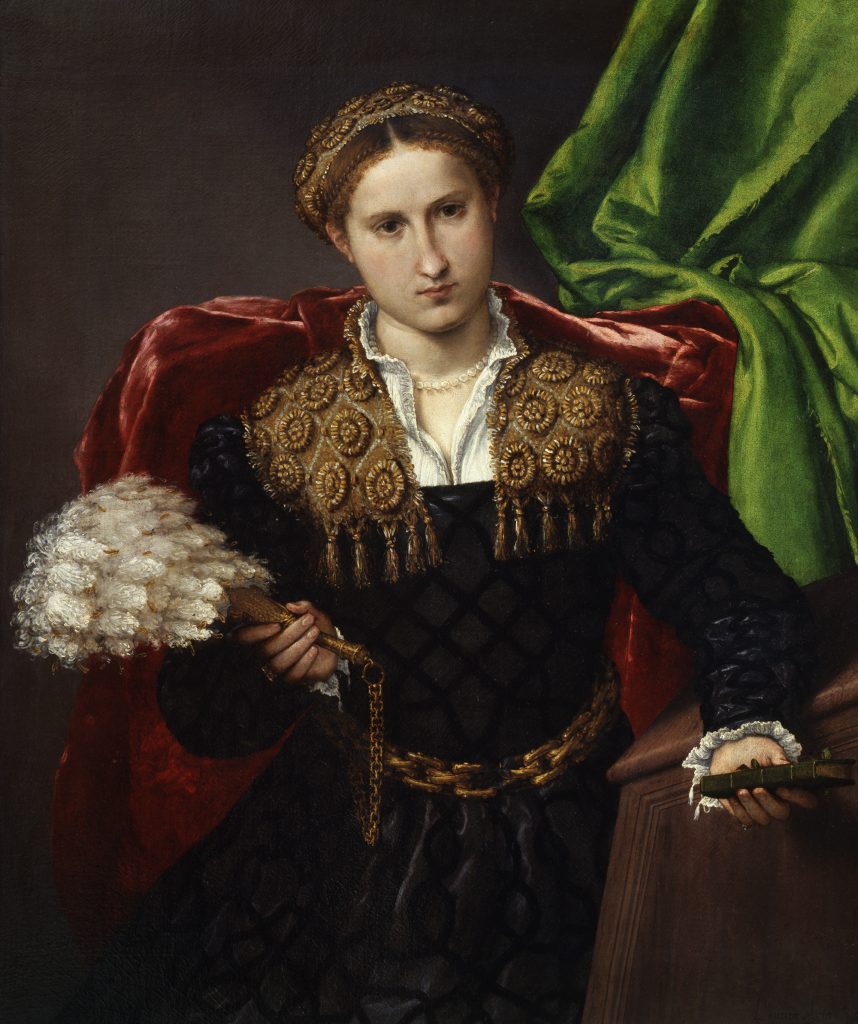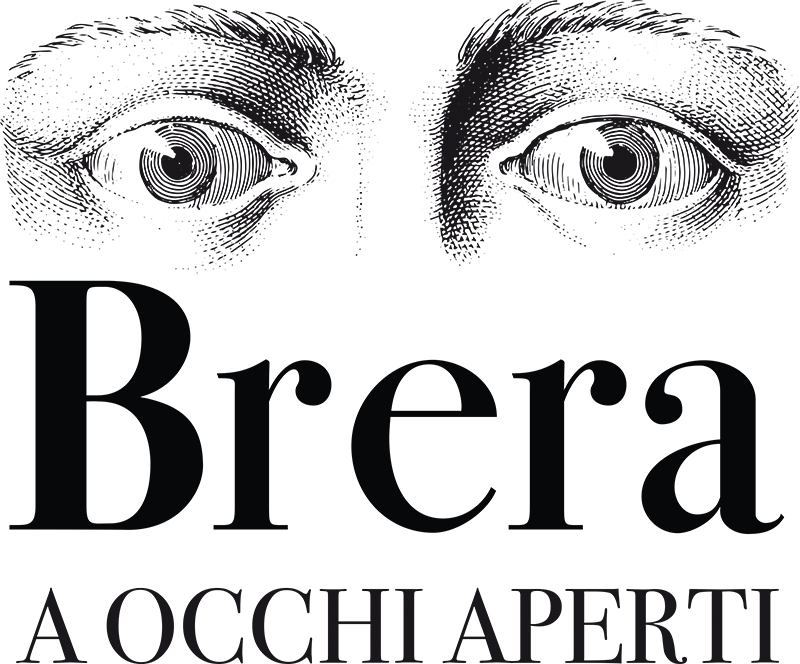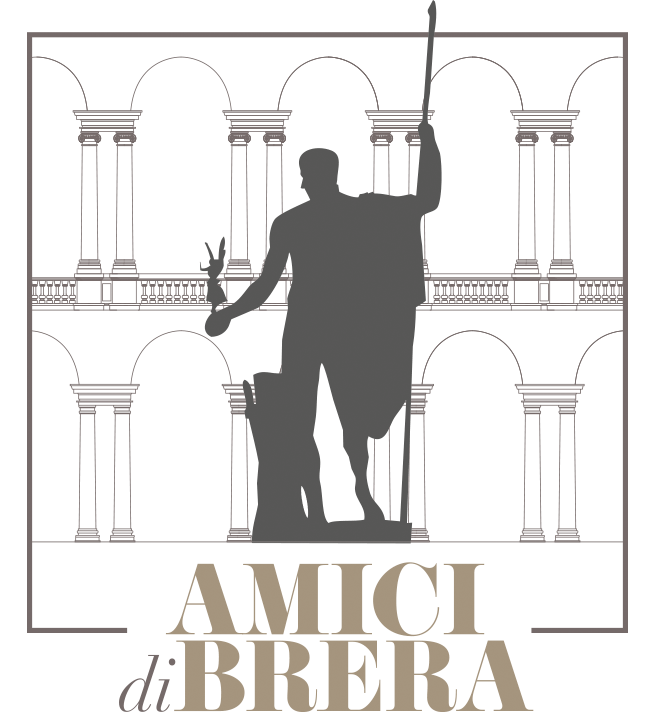LORENZO LOTTO
(Venezia, 1480 – Loreto, 1556/1557)
Portrait of Laura da Pola
1543-44
Oil on canvas
90×75 cm

PAINTING
Laura da Pola, whose canvas is a pendant piece with the portrait of her aristocratic husband, Febo Bettignoli da Brescia, is portrayed here in her twenties in a mature masterpiece by the Venetian painter Lorenzo Lotto. Against a dark background, brightened by the green colour of the curtain, the woman sits at a kneeler holding a small prayer book. In spite of her resigned pose, she wears a dark, very sophisticated dress in two shades of the same colour, with expensive accessories. At the time, in fact, it was not permitted for unmarried women to appear in public: these fashionable details should therefore be read as a celebration of the status of wife that the woman had acquired, authorised to display herself and her rank, above all, thanks to her successful marriage. In 1859, the two portraits were put up for sale and bought for the Pinacoteca: the money was fronted by the Venetian, Francesco Hayez, the famous painter of The Kiss, now an icon of the Milanese museum.
BIOGRAPHY
The non-conformist Venetian painter Lorenzo Lotto led a life of wandering in the hinterlands, far from the Venetian scene dominated by Titian.
Rediscovered in the 19th century by the critic Bernard Berenson, with his failures and disappointments making him a fascinating and very modern figure, he is first documented in Treviso. In 1509, he resided in Rome, and in the palaces of the pope his works were soon replaced by those of Raphael. For Lotto, the impact was devastating: he left the city for good, despite his career possibilities. He moved to Bergamo, a region of Veneto that was open to Lombard influences, and experienced happier times. He resumed his travels, often to the Marche. He finally became an oblate, a lay member of the Holy House of Loreto. There is not even news of his death, despite the fact that his masterful portraits had invented a new bourgeois style for the minor provincial aristocracy: a psychological dialogue between painter and subject.

